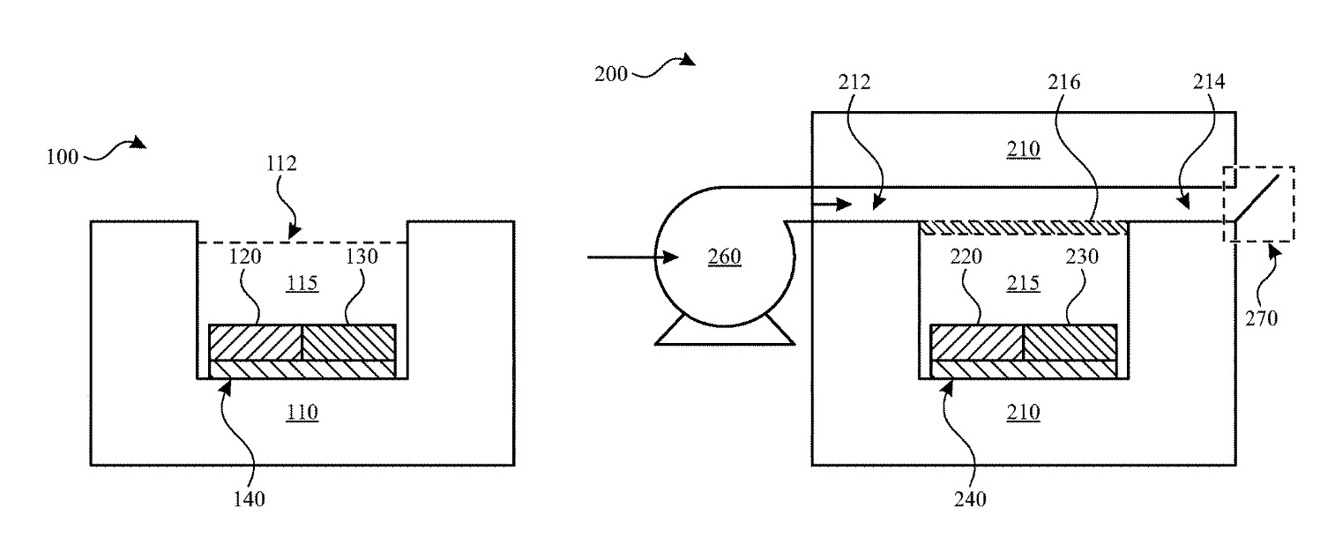Apple refining methods to reset & calibrate future iPhone toxic gas sensors
Apple is continuing work on iPhone-embedded poisonous gas sensors, with its latest invention being a way to calibrate and lengthen the life of the consumable materials used to detect the toxins.
In a patent application published by the U.S. Patent and Trademark Office on Thursday, Apple is adding detail to what it is working on, in regards to a poisonous gas sensor. While adding a gas detector to a device isn't entirely novel, the latest patent application covering the work titled "gas sensor baseline correction using multiple co-located gas sensors" goes further, delving into ways that Apple can maintain accuracy of minute sensors.
Metal oxide gas sensors can be very small, have very low power consumption, and are easy to fabricate. But, over time, they can lose accuracy, or even fail to work after repeated, minute exposure to toxins.
Beyond Apple's initial work on a multi-layer silicon-based sensor with electrodes deposited on the substrate, Apple has refined how it is planning on using "hot plates" or heating elements to refresh the gas-sensing layer.
As proposed, Apple's granular metal oxide semiconductor material sensor could be used to detect multiple common gases. As the resistance increases in the plates, software in an iPhone could calculate the target gas concentration and pop up a warning for the user.
The latest iteration details pairing sensors, both with the heating elements, and comparing the two. Over time, comparing the results of the two sensors, a combined system can mathematically correct for any drift caused by exposure or use. Additionally, applied correctly, the heating process can not just compensate for drift, but also effectively clean the sensing plates.
Apple also proposes the possibility of the sensor being held in an enclosure, with multiple adsorbent layers lining the interior of the casing. The multiple adsorbent layer could selectively let target gases through, with different layers responsible for sensing different environmental toxins.
Apple adds that a second set of heating elements could be added to the enclosure, allowing for control of gas flow. With the first elements on and the second enclosure elements off, the system is in a position that allows for "poison removal," namely encouraging it to dissipate around the sensor. Reversing the heating element states are said to help a "regeneration operation" take place.
Minus this regeneration operation, the sensor pads would have to be replaced at a frequency depending on exposure to maintain effectiveness. The heating element could lengthen this replacement cycle beyond what would likely be months for most users without the system, to multiple years.
Apple issues a large number of patents and applications on a weekly basis, and while they illustrate where Apple has focused in the last, it is not a guarantee that the concepts described will be introduced as part of a commercial product or service.
Creating small and easy-to-integrate gas sensors would offer the opportunity to have more of the sensors not just in a home like common smoke detectors and carbon monoxide sensors, but it could allow for portability as well. Additionally, the layer-cake design of the sensor substrate could allow one element to sense multiple gases instead of the single-gas detectors currently offered on the consumer marketplace.
As a result, HomeKit safety devices could become more prevalent. Sensors coupled with HomeKit technology could be used to warn homeowners of a gas leak or other hazardous conditions while they are at work or away from the home itself.
This is not the first time Apple has considered warning users of environmental dangers. In a December 2016 patent application called "Electronic device with speaker enclosure sensor," Apple suggested adding an environmental sensor within a speaker cavity, giving it some protection from the elements while allowing the natural air movement of the speaker diaphragm to help it collect samples.
 Mike Wuerthele
Mike Wuerthele












 Wesley Hilliard
Wesley Hilliard
 Andrew Orr
Andrew Orr



 Amber Neely
Amber Neely

 William Gallagher
William Gallagher






